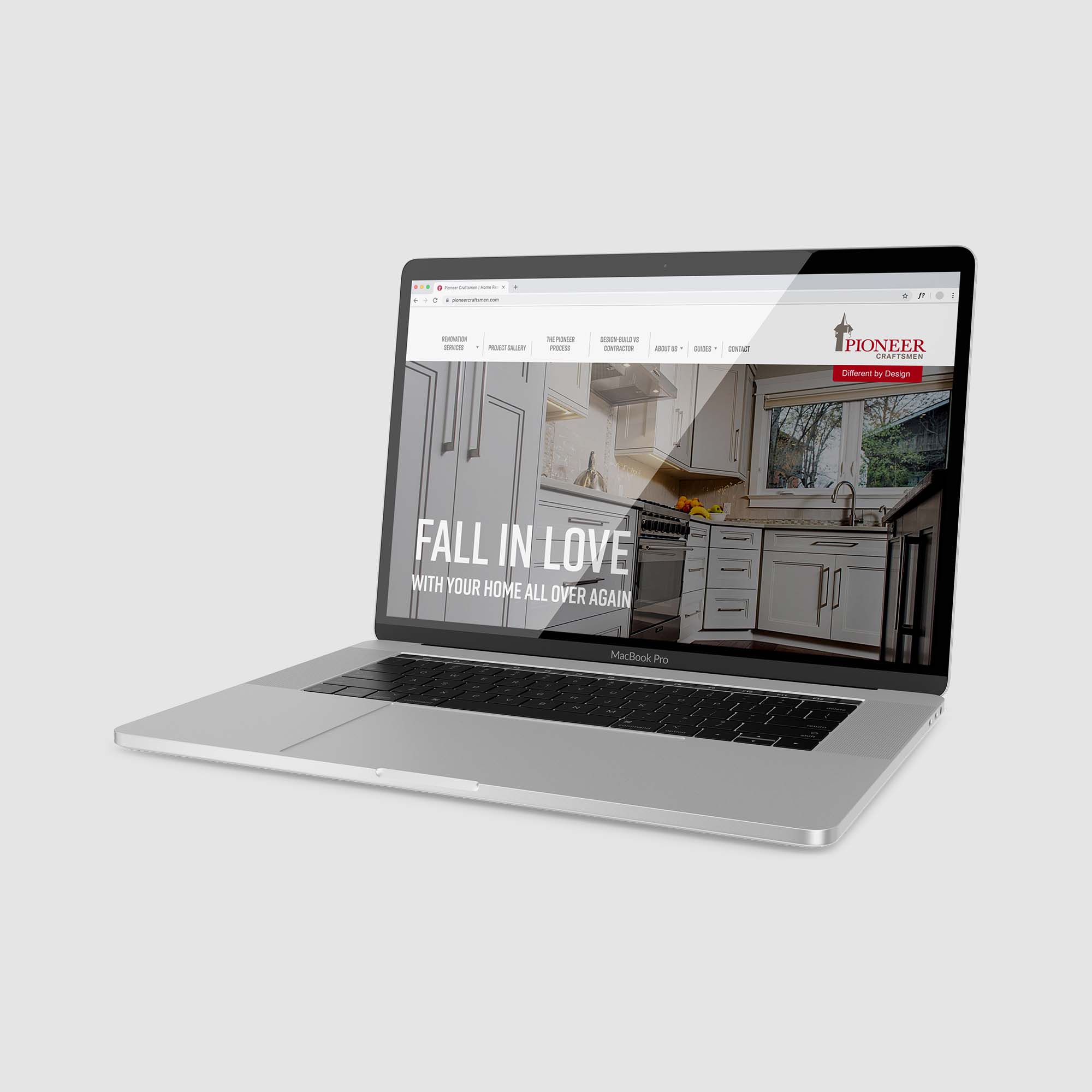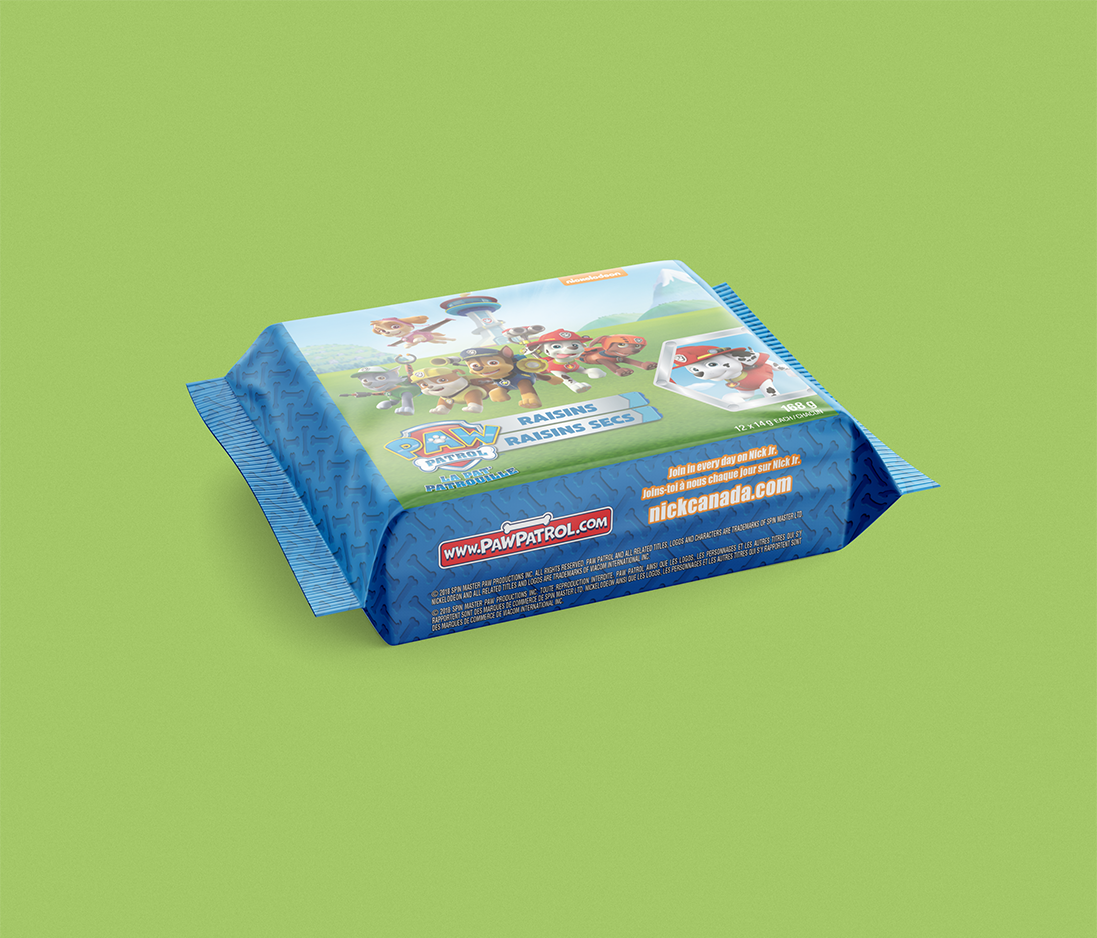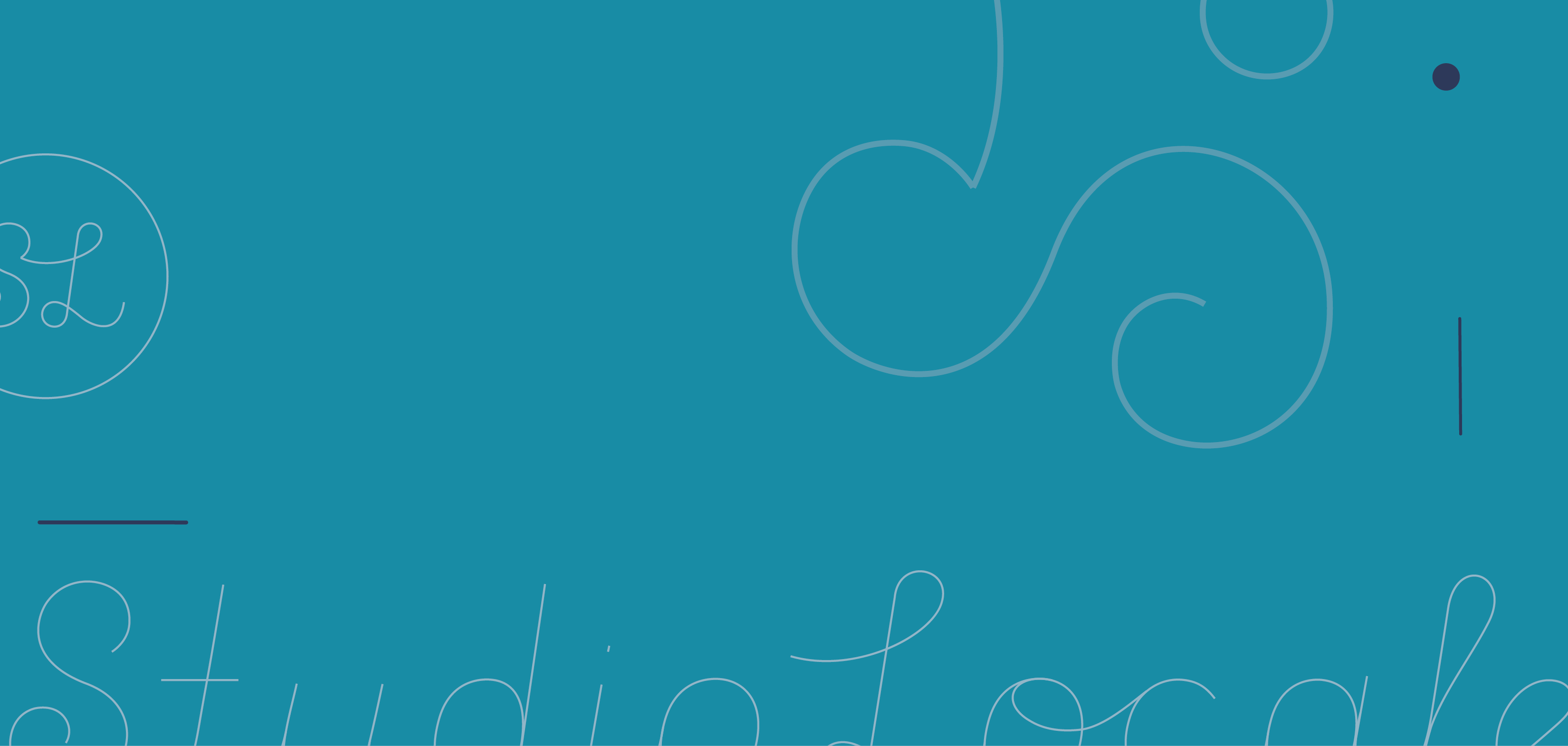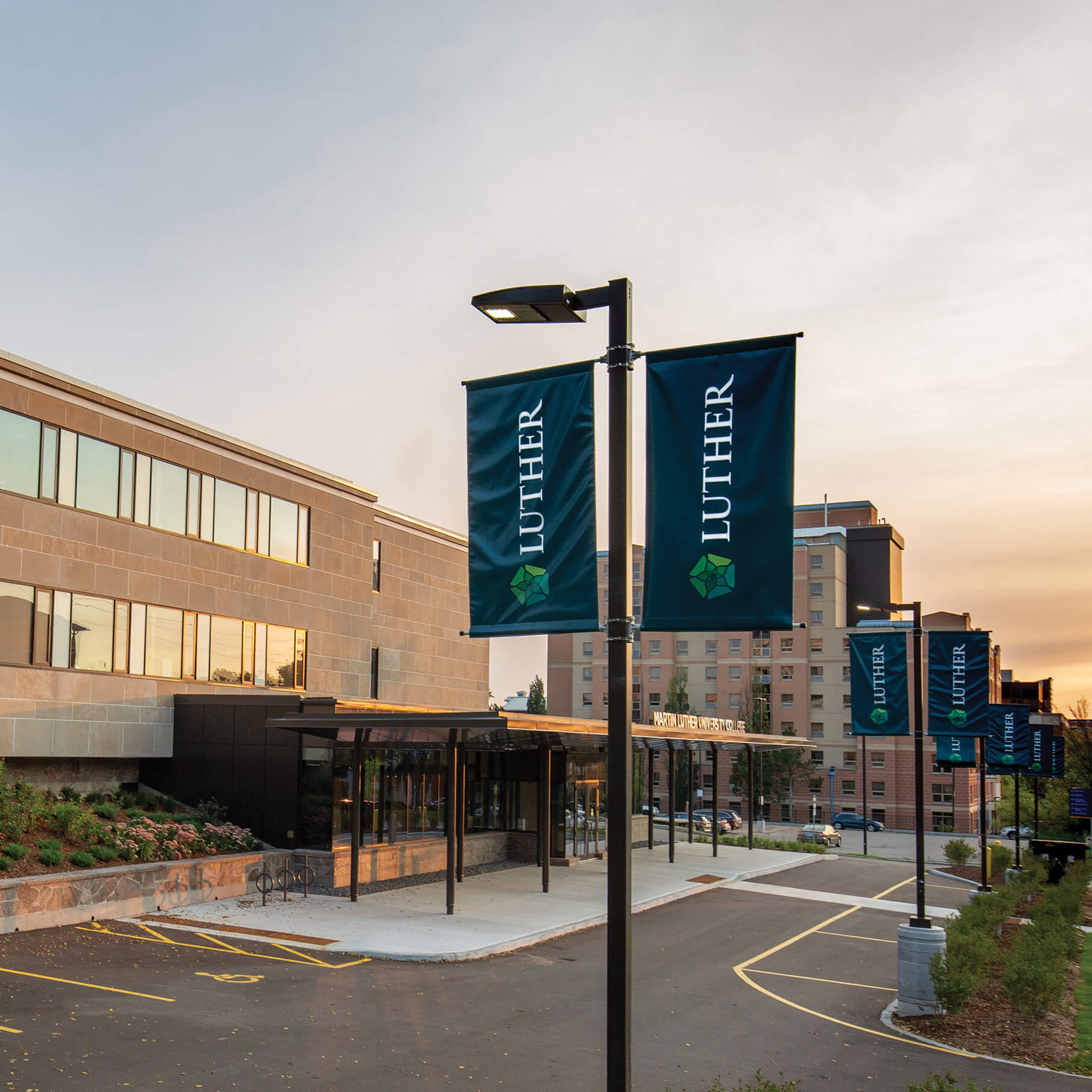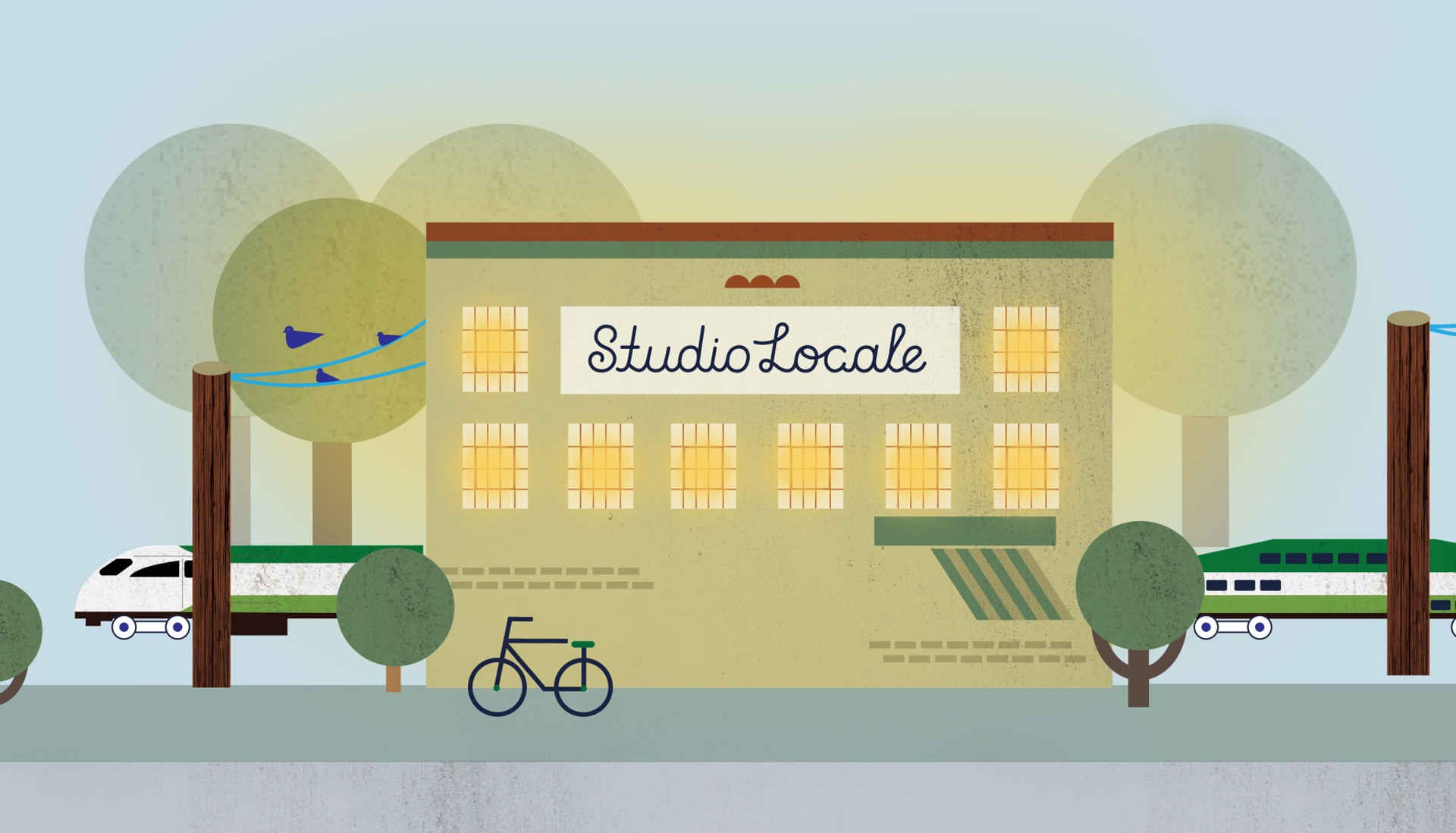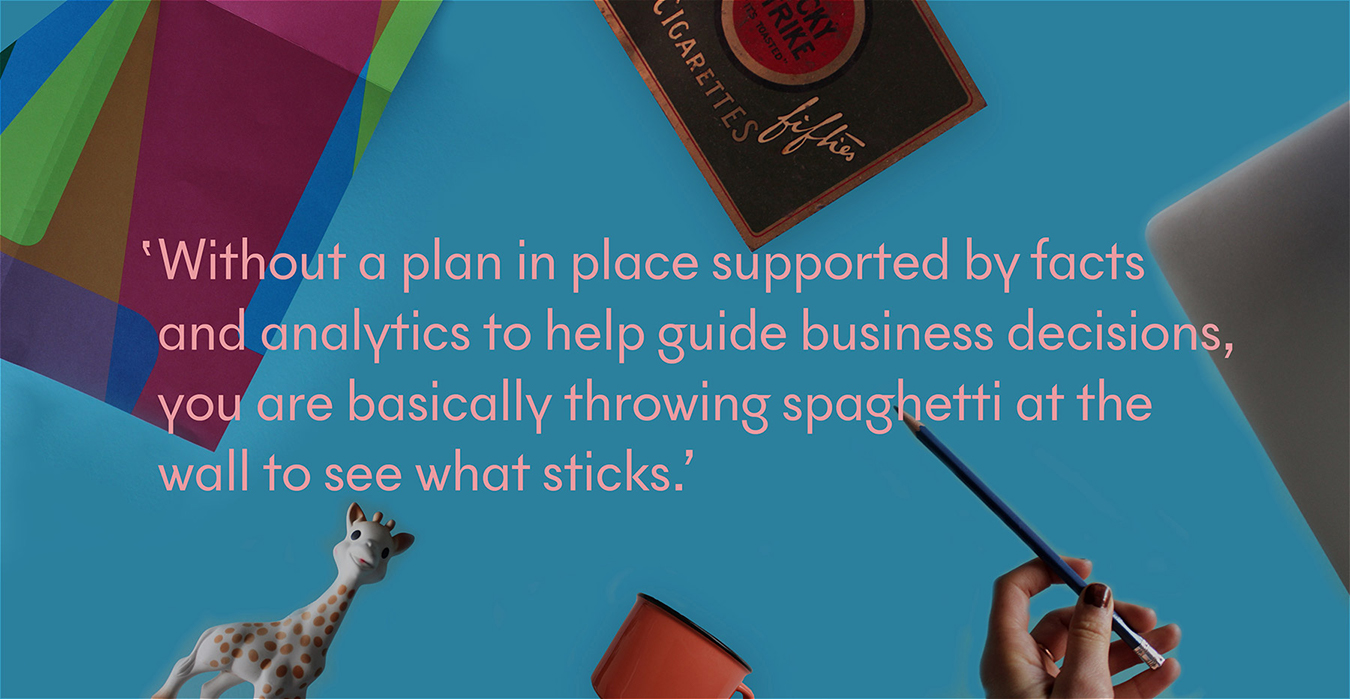Pioneer Craftsmen Case Study
The Backstory:
For over 65 years, Pioneer Craftsmen has been one of Waterloo Region’s foremost design-build home renovation companies for clients who value exquisite design, quality craftsmanship, and exceptional service. As a third generation, family-owned company committed to improving everything it touches, Pioneer felt it was time to update its branding and website.
When Ken Adam founded Pioneer Craftsmen in 1953, he chose the Pioneer Tower to be the main focus of the company’s logo because it was an iconic local landmark (built in 1926) that represented Waterloo Region, its heritage, and stood the test of time thanks to great craftsmanship. These values were the same ones he wanted to instill in his new venture.
Although Pioneer’s logo subtly evolved over the years, it always maintained the traditional-styled tower illustration. While Pioneer cherished the family roots associated with this key design element, it was making the company’s identity appear traditional and dated. It was not indicative of the modern design and craftsmanship solutions Pioneer was offering its clients today.
The company’s website had also reached a point where it was time for an overhaul. While all of Pioneer’s award-winning projects were showcased, the visual design of the site was beginning to look dated, and the messaging was light on portraying Pioneer’s personality, proven process, and how it was different from other renovators.
The Ask:
Refresh the company’s logo with a modern look/feel to better reflect Pioneer’s forward-thinking design, elevated craftsmanship and approach, while keeping the tower icon in place to avoid losing any brand equity built over the last 65 years.
Develop a new tagline that clearly communicates how Pioneer’s renovations are different from its competitor’s; a slogan that only Pioneer can take ownership of given its strengths and reputation.
What We Delivered:
Logo
After conducting some research and developing an updated strategic brand plan, we got to work on refreshing the logo. It began with modernizing the style of the tower icon and ensuring it remained a recognizable landmark. Grey was chosen to create contrast with the rest of the logo and act as a secondary visual focus to Pioneer’s name. Next, the logo’s dark burgundy colour was replaced with a lively tone of red to add brilliance and vibrancy. Contemporary fonts were carefully selected for Pioneer Craftsmen’s name which blended serif and sans serif styles.
The wordmark was then thoughtfully integrated with the rejuvenated tower icon to create a fresh, beautifully balanced identity. The final logo successfully expresses Pioneer’s forward-thinking design and craftsmanship, while still paying homage to its founder and the beacon of lasting quality he wanted the company to be known for.
Tagline
Based on the brand plan and Pioneer’s positioning, “Different by Design” was developed as the new tagline. It clearly communicates what clients can expect when choosing Pioneer Craftsmen for their home renovation partner. The phrase immediately and successfully resonates with the company’s target market; those looking for something unique and far beyond the average home renovation. Not only does it place great focus on Pioneer’s unparalleled ingenuity and design solutions (which competitors typically contract out), it also reflects how the company’s approach has been designed to be purposefully different.
All of Pioneer’s projects are design-build, so its cohesive team of in-house designers and carpentry craftsmen can collaborate to develop (and build) the best design solutions. Using a proven four step process, Pioneer effectively takes the guesswork and unwanted surprises out of large home improvement projects for clients and replaces them with truly enjoyable experiences.
Pioneer also works differently by assigning a lead carpenter who is solely dedicated to one project. Combining this with its full-service capabilities ensures clients never have to play traffic coordinator between trades or be a budget master (like using a general contractor would require). Clients have peace of mind knowing there is one source, one responsibility for their home renovation and that they are in excellent hands with Pioneer Craftsmen.
Website
As the team works so transparently with their clients, it only made sense that the website should reflect this approach. With this in mind, Studio Locale worked with Pioneer to build an on-line experience that would clearly convey what clients could expect working with Pioneer.
The new website is rich with content, thoroughly outlining their process and showcasing completed projects. Each page takes visitors on a journey, from imagining the possibilities of a renovated space, to the completed project.
Supporting videos provide examples of what clients can expect working with Pioneer through each phase of the project, demonstrating the care all of Pioneer’s team members take to provide the best possible experience.
What Happened Next:
Pioneer’s new logo and tagline were rolled out across a variety of marketing pieces including stationery (including business cards, letterhead, envelope, e-signatures, note pads, thank you notes), roadside signage, vehicles, staff uniforms, newsletters, and the website.
The new identity has been a great success! Stakeholders are thrilled with the modern logo that stays true to the company’s roots, returning customers (who knew the original logo well) love the new look, and Pioneer’s staff continue to wear their uniform shirts with immense pride.
The website has been an extremely valuable marketing tool as well. Through strong SEO tactics, a comprehensive lead generation form, and the overall elevated experience, Pioneer successfully fills their team’s schedule with right-sized projects.
With comprehensive research, strategic marketing, and engaging visual design, Pioneer’s refreshed brand will continue to forcefully position them as Waterloo Region’s premier renovation team for many years to come.
“There was some concern for me at the very beginning of the process, but that concern was quickly overcome once I saw the depth you were proposing to go to learn about our company, our process, and what makes us different. From the initial meetings at our office reviewing our process with our team, to actual phone calls with our sales team playing the role of potential client, it was clear that the team at Studio Locale truly wanted to know the journey we take our clients on.”
Jamie Adam, President
Pioneer Craftsmen
Industry
Home Renovations
Discipline
Brand refresh, tagline, website, marketing materials
Project team
Anson LeClair
Erynn Hayden
Phil Mondor
Janice Powell
Contributors
High Rise Studios
Mike Powell
Maxwell Foods Case Study
The Backstory:
Excited to be bringing two products into the Canadian market, Maxwell Foods needed to update its packaging to meet Canadian requirements. The two products, Paw Patrol Raisins and Cepmix, were planned to ship in a relatively short period of time and turnaround times needed to accommodate their timeframe.
What We Delivered:
Starting with supplied UK packaging, we first began with updating the Paw Patrol Raisins for the Canadian market. Freshening the layout to continue featuring the Paw Patrol characters, we incorporated the French language requirements on all of the pieces – individual boxes, cellophane wrap, doy bags and shelf casing.
Because the Paw Patrol characters are a licensed element, we liaised directly with Nickelodeon to ensure their logo and character usage followed their branding guidelines. When you are presenting such well known television channel and its characters, it’s important that what is seen on the shelves matches with everything else – those little people are sticklers for the details (not to mention the higher execs!).
Next we moved onto the Cepmix packaging, a new, single serve adult snack of dried fruit and nut combinations. As a new product in the Canadian marketplace, the goal was to present a fresh product package while keeping true to the brand already established in other countries.
After recommending an updated colour palette for the 3 different varieties, we again adjusted the elements to incorporate the French language requirements. Subtle changes were also completed to enhance the ingredient imagery and appeal to the target demographics for the product.
With discussions underway to place the products in Loblaws, Shoppers Drug Mart and Walmart locations and no updated product imagery to share, actual size mock ups were created and supplied to support finalizing the distribution channels. We also helped prepare product image files for the retailer’s product systems – making sure the best quality images are available for the retailers to use in their promotional materials.
What Happened Next:
Both the Paw Patrol and Cepmix products are soon to be available in Loblaws and Walmart locations. With all of us committed to healthier eating for ourselves and our families, we are looking forward to having both the Paw Patrol Raisins and Cepmix snack boxes available to include in our lunches!
Industry
Food & Beverage
Discipline
Packaging
Project team
Erynn Hayden
Philip Mondor
Robin Mondor
Scrolling on your website can improve user experience
One thing we still hear often from new clients is, “Make sure there’s no scrolling on our website. I don’t like to scroll.”
We really question this thinking. Yes, it’s essential to have your most important content above the fold (being the theoretical cut-off in which the visitor has to scroll to start seeing more content); however, are we doing more damage by trying to squeeze every bit of information into a very small space? The answer is almost always yes.
Squeezing every piece of content above the fold could be compared to leading a customer into a room where a half dozen people yell at them simultaneously to get their attention. Who should they listen to? Which person has the actual information they are looking for? Do they feel welcomed and at ease, or confused, defensive and frustrated?
A good designer knows that content and design elements need room to breathe so the eye can focus on the most important elements first, like what your company does and its key selling proposition or message. If you make the right first impression, a visitor will know that you are qualified to help them with their particular need and have no problem scrolling to find more information because they know they are in the right place.
If you make the right first impression, a visitor will have no problem scrolling to find more information because they know they are in the right place.
Scrolling is Everywhere
If we haven’t convinced you yet, the thought that scrolling is bad is dated for a couple of key reasons:
1. Many content-rich sites that people spend most of their time on every day require scrolling. Take a look at any search engine, news, shopping or social media experience. Since we’re spending most of our time on sites like these, we’re all used to scrolling to see the content. It’s second nature, we don’t even think about it. In the examples below there’s lots of valuable content below the fold. Trying to fit everything above the fold would be impossible and ineffective.
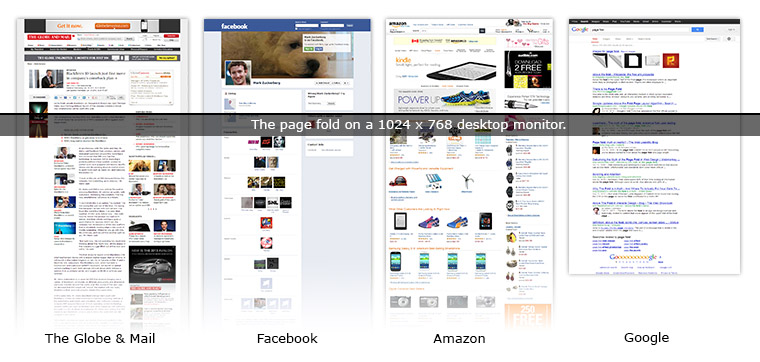
2. We all browse on different sized monitors. Before mobile devices, there were fewer screen sizes and designers/programmers could almost agree upon one universal screen fold. Now, with people using smartphones, tablets, laptops, desktops, and even TVs as regular internet consumption devices, each one has different capabilities and screen resolution. To go one step further, there is no set size on the millions of smartphones out there.
We’re not dealing with design for a physical space where we know the exact size of the canvas our content will fit. We’re dealing with canvases that are flexible and even infinite. Our content must adjust to fill them and with smaller screen sizes, scrolling is definitely necessary.
Proof that People Really do Scroll
One of the great things about the web is that we can track how we interact with websites in an effort to make improvements. Using analytics software we can determine if users are scrolling to read content or abandoning long pages. In the example below the red area indicates the point on the page that 100% of visitors scrolled to. What you can’t see is that there is content above the fold, which means 100% of our visitors are scrolling to read the primary content on this page.
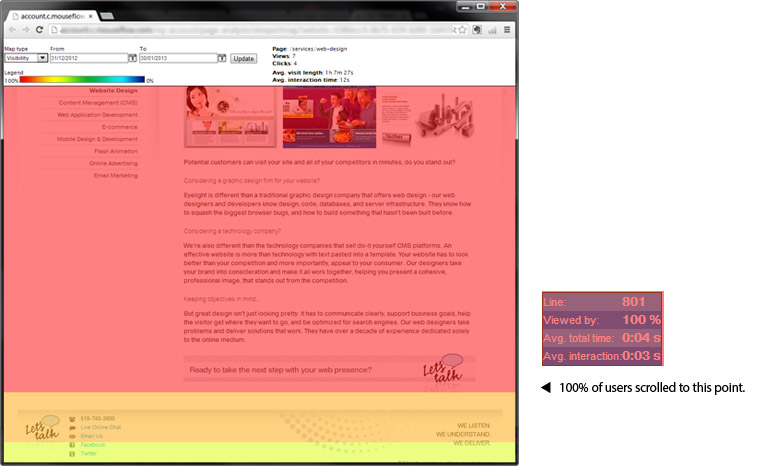
So where does the ‘no scrolling’ expectation come from? My guess is that people have gotten used to the print design process and they don’t think about their actual browsing habits on the websites they visit daily. If you are personally in the habit of scrolling without thinking, odds are the visitors to your site browse with this behaviour as well.
Embracing the Possibilities
Designing for the screen is not like designing for print. We have different restrictions on screen, but we also have different possibilities like video, motion, and sound, as well as a real-time marketing tool that can be immediately updated and expanded for a lot less cost. We should use this flexibility where it’s appropriate to meet all of our customers’ informational needs while enhancing their user experience. Imagine if a print piece could have scrolling so you could add more content than would physically fit on the paper? Most would think it was a great idea, so why doesn’t this attitude carry over to the online environment where scrolling is expected and regularly used? The answer is to embrace scrolling for the benefits it can bring to the user experience.
Martin Luther Case Study
The Backstory:
Martin Luther University College, formerly Waterloo Lutheran Seminary, is a founding educational institution within Waterloo region. Both Wilfred Laurier University and University of Waterloo can be traced back to the school, which now offers a multi-faith environment for both undergraduate degrees and master’s or PhD programs. After receiving approval for a name change, Martin Luther University College was in need of a new identity that paid homage to their past while reflecting their current vision and goals.
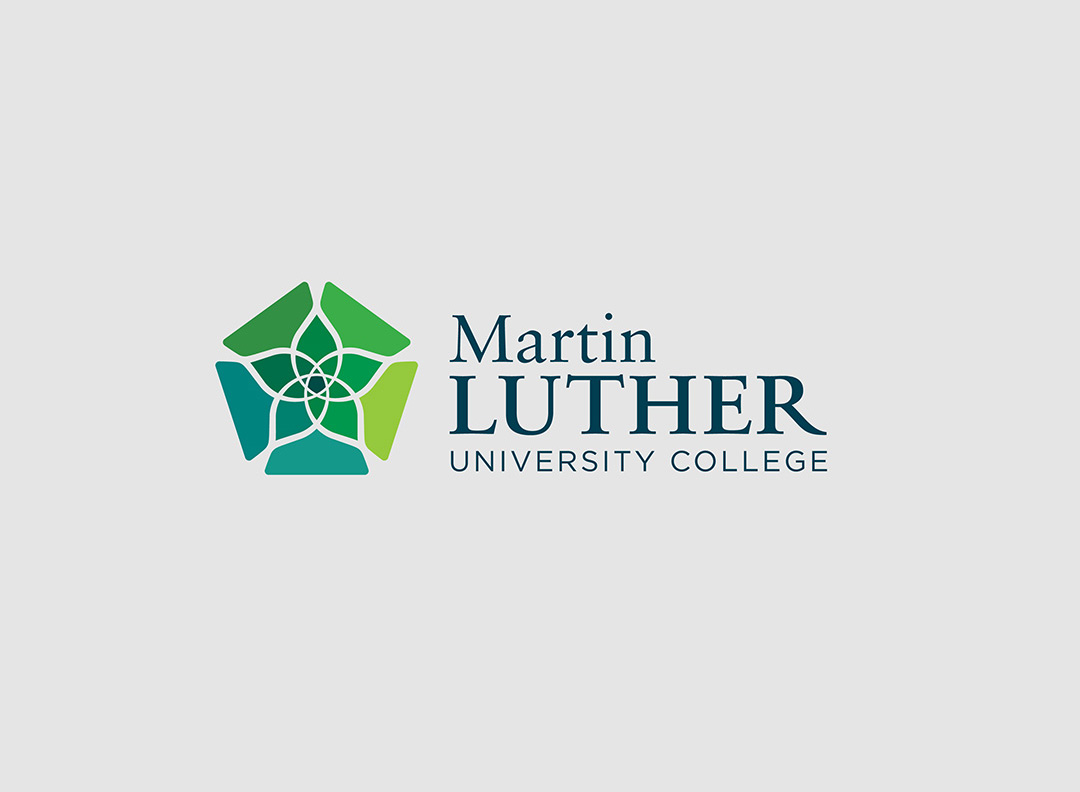
What We Delivered:
Brand Research
To start with a strong foundation, we began by growing our understanding of the Seminary’s history and the experiences of past students, faculty and the surrounding community. Their memories and stories identified aspects and areas, common across all of those interviewed, that reinforced the vision for Luther shared with our team. Grouping these insights into themes, the team had a well-balanced base and was ready to begin developing the initial ideas for the new visual identity.
Visual Identity
With the breadth and depth of insights gained through our research and interviews we explored a number of possible visual representations for Martin Luther University College. Working with the core team, these initial ideas were refined and whittled down to a handful of options that could be presented to the larger group that would be participating in the selection of the new identity. While the final decision would be made by the board, feedback and insight was sought from the faculty and staff as well. To keep the focus on the actual identity / mark and not differences in possible application, the presentation of ideas focused on the details of each concept and the rationale behind each, bringing the larger group into the journey of the design process. The selected direction was “The Ringing Rose”, an icon created that linked to the school’s history and an iconic feature of their Waterloo campus beside the full name of the school, visually emphasizing “Luther”, the informal reference to the school.
Brand Playbook
Following the selection and further refinement of the preferred direction, Studio Locale began the development of a brand playbook and communication templates that could be followed by their in-house creative team. We presented the new identity in a variety of applications including business cards, stationery, kit folders, brochures, an updated school seal and of course student swag. With these resources and examples, the team had what they needed to rollout the new identity across all of their marketing tools.
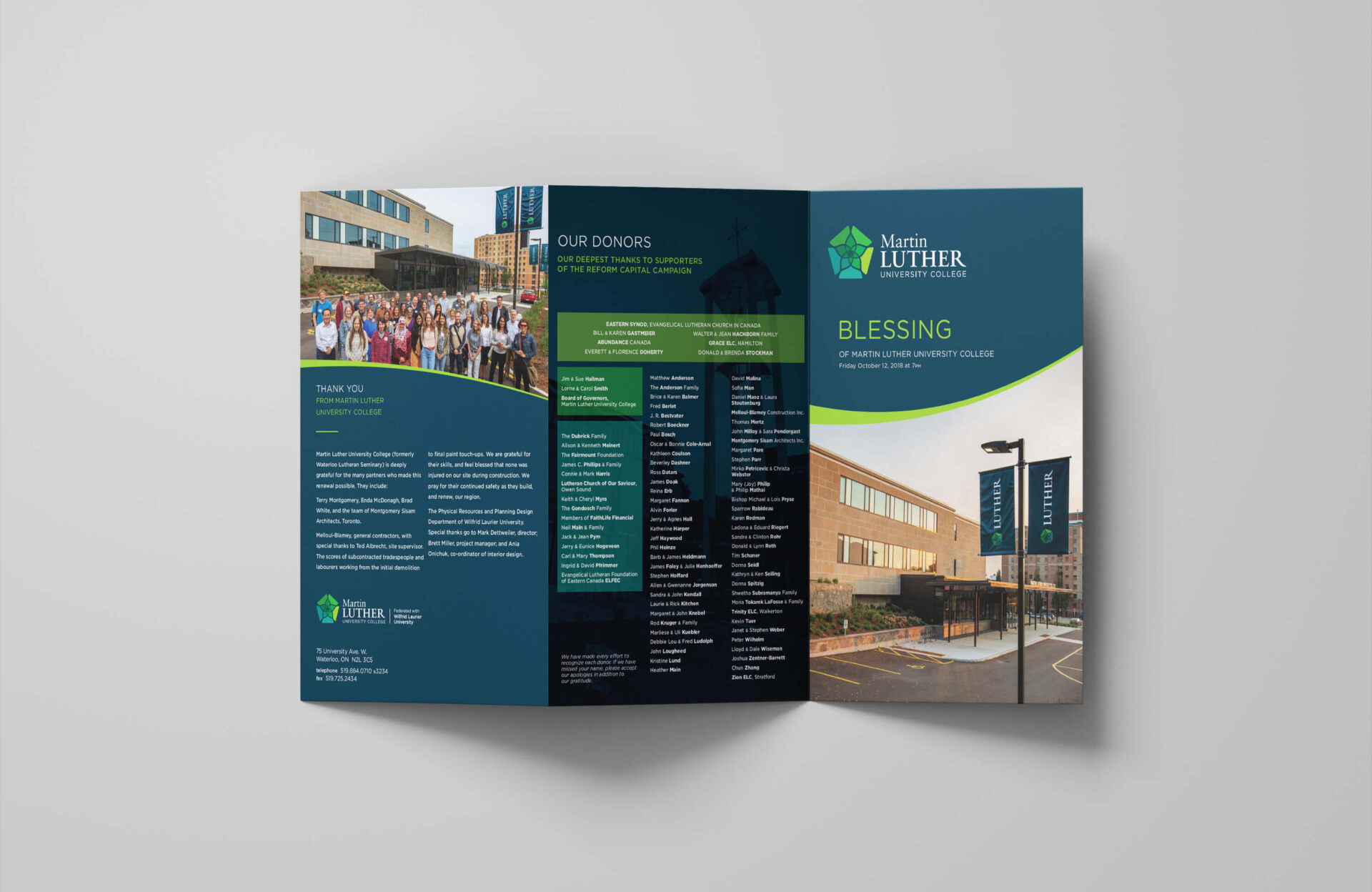
Brand Extension:
The Delton Glebe Counselling Centre
With the rebrand of Martin Luther University College, Delton Glebe Counselling Centre, a community program of Luther that provides mental health services to the community, needed its identity updated to follow the new look. A leaf shaped crop that incorporated their previous identity brought the centre’s look in-line with the new Luther visuals and clearly linked the two, something that was missing in the previous versions of both their identities.
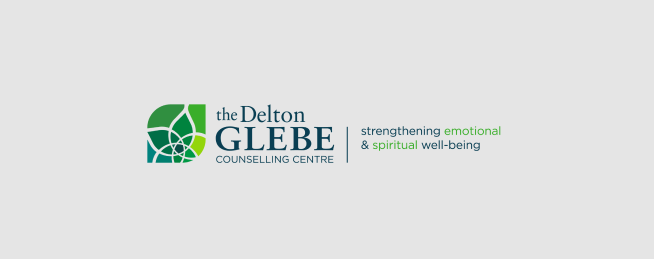
We’re Growing
We’re thrilled to announce the latest chapter in our business’ story. We have collaborated with Eyelight – a local creative services agency – on a business agreement that enables us to grow and allows their founder and principal – Debbie (Deb) Repke – to retire with the confidence that existing Eyelight customers are in good hands.
“We’ve been talking with Deb for many months now, but it was apparent after the first conversation that we had a lot in common. Our agencies are both passionate about design, communications, and our community. We care about putting people first and believe that design has always been about having people at the centre of the process.”
Phil Mondor, Partner and Creative Director
After 30 years, Deb found herself ready for her next adventure. She is retiring and wanted to collaborate with a local agency that shared her values to continue serving Eyelight’s customers. When Eyelight officially closes its doors at the end of this month (September 2017) former staff members Janice Powell, Anson LeClair, and Janet Day will officially become a part of the Studio Locale team.
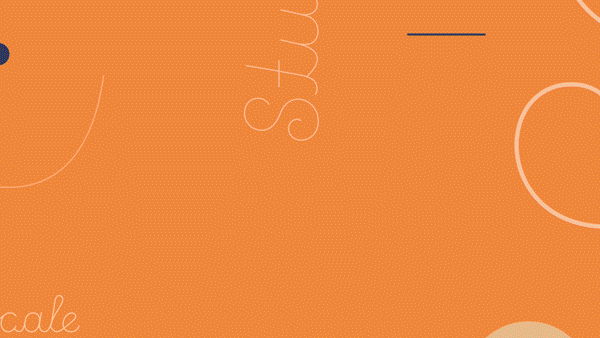
Growing Strong
We’re growing by combining forces with Eyelight – a fixture of the creative services landscape here in Waterloo Region. From six team members to now nine – as our team grows, so do our capabilities and expertise. The addition of Janice, Anson, and Janet bolster and enrich our marketing, communications, and design capacity. We also now have in-house development resource with a solid stack of programming languages and technologies. Our diverse team brings many years of combined brand, design, communications, marketing, and digital experience. We have worked with clients in a broad range of industries and markets including consumer packaged goods, business and financial services, technology, lifestyle, education, government, and non-profits.
Let’s Chat
Whether you are building from scratch, refreshing or shifting, our team is ready to jump in and work with you to create memorable brand and communication experiences. We believe design is a social act. All our client solutions are designed and developed through conversation and we invite you to join us at the table.
The value of having a strategic plan for your company
Having a solid, strategic plan for your company is hands down one of the most important steps before diving further into communications and marketing activities.
It is the foundation of everything that will come next. And we know that what we’re about to talk about is easier said than done.
We work with companies on their branding and communications efforts using design and marketing. It is with some authority that we can say without a plan in place, supported by facts and analytics to help guide business decisions, you are basically throwing spaghetti at the wall to see what sticks.
We have seen this method “work” for people again and again. It can be true that a great idea accompanied by some hustle and hard work can get you pretty far. It’s absolutely true, though, that in most cases you are not your audience. If you haven’t done the work to get to know everything you can about who actually buys your product or service and why. You are running entirely on what you think to be true rather than what is true. A plateau or decline in sales is often inevitable.
Building your plan from a place of strategy is really about breaking free of the status quo. Although it may be that status quo that got you to where you are, it’s going to be the strategic decisions made to grow beyond your company’s plateau that will make the difference. It’s for this reason that we ask our clients, again and again, to get comfortable with the idea of being uncomfortable. It’s in these moments of discomfort that true strategy happens.
As designers and communicators, we are asking our clients to trust us with their livelihoods. We are asking them to trust that we can see beyond what they see and that we can help them grow. It may not happen overnight, but you will learn to become comfortable pushing the boundaries. From there It’s a short jump to real and lasting results.
If you no longer want to risk dropping spaghetti on the floor, then it’s time to connect. Our team would love to help build a strategic plan that works for you!
I Felt Like It - Intuition in Graphic Design
We’re now in a time when anyone with access to graphic software can be a designer, and when cheap logos are crowdsourced and published faster than ever.
So, what skills do designers have that are exclusively theirs and why should people care?
After going to networking events around the city, that are largely centered around tech and startups, it is clear that because people don’t see the creative process of designers and how they reach their final conclusions, they don’t understand what makes good design good design. Behind the scenes designers work thoroughly through brainstorming, sketching concepts, creating version after version, scratching ideas and streamlining thoughts. This cyclical decision-making process is virtually invisible in the final iteration of the design. I’ve come to realize that a designer’s ability to connect abstract ideas such as feelings, emotions, and sensations into visuals is largely taken for granted.
Designers use intuitive thinking and connect it to aesthetic. From experience and training, designers have learned to see laterally and know when they should trust a feeling, hunch or sensation about their work and how to to make the translation into visuals. This sense or feeling is present in how we as designers see the world, how we interpret certain elements and how we know what to include or what to leave out of the scene.
Designers in their prime, much like artists, slip into flow state where intuition works as a subconscious drive. In this state ideas and decisions are generated in the moment and are executed through notions such as ‘it felt right’. However, the justification ‘it felt right’ for a visual solution does not suffice and designers must be able to explain how they strategically chose a certain aesthetic or solution for a design. Of course, intuition is a part of what designers do, but to what degree and why does it matter?
Dutch Designer and researcher Daniel Van Der Velden explains, “If someone brings up ‘they feel like it’ as a justification for design, of course, that’s uninteresting. But if intuition tells you what needs to be what, that’s interesting. Because it refers back to the capacity of designers to observe. They observe a certain reality around them, a certain state of things around them, and at some point, they think: this is the best expression. That moment is important for design.”
As Daniel explains, intuition is best used in combination with a designer’s ability to make interesting and smart connections between everyday experiences. For example, connecting an Alfred Hitchcock movie to a commercial about diabetes awareness. These two things seem to have nothing to do with each other at first glance, but have relevant and linkable connections when designers use their ability to create meaningful comparisons. The connection may come from the film director’s style to overly dramatize film scenes by using a variation of different close up shots and angles. This dramatizing effect can be applied to emphasize the reality of living with diabetes.
The ability to make interesting and smart connections is especially present when finding inspiration outside of the field of design such as psychology, science, and art history. In this way designers may create more unique work by looking outside any associative barriers – this is design. This is where a designer’s talent comes alive, where he or she produces new, exciting, and sometimes obvious but overlooked solutions to a job. field of design. It’s also about being confident, about trusting one’s gut feeling and owning it—as long as that gut feeling gets the designer to an unfamiliar or unique conclusion. This also means being able to justify the conclusions reached with your intuition, proving it’s purpose and relevance and separating them from personal drive and intent, which instead becomes style.
I’ve found that relying on intuition works best when there is little time for drawn out or more traditional conclusions—when there is the familiar pressure to just ‘get something done’. Sometimes however, the best conclusions we reach as designers are those found in a state of flow regardless of the time or parameters we have with a project. As David Carson describes, “An intuitive choice is thus as conscious as a considered choice, it simply uses aspects of consciousness that are not accessible to language. It cannot say, but it can show.” (Carson).
Written by Nicole Beno



